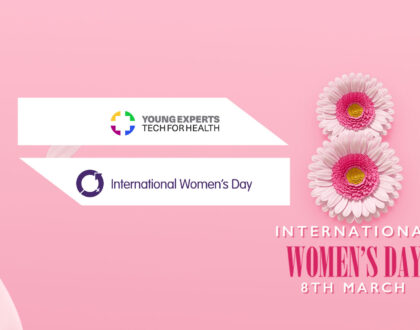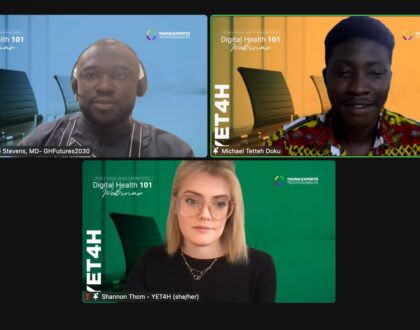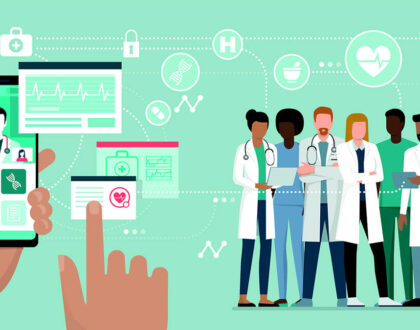COVID-19 Exposes Digital Inequality among Young People [Cross-Post]
![COVID-19 Exposes Digital Inequality among Young People [Cross-Post]](https://yet4h.org/wp-content/uploads/2021/09/Blog-post-image-4.jpeg)
The COVID-19 pandemic has highlighted the importance of digital access and the inequality holding back children in Sub-Saharan Africa, says Richard Dzikunu.
As most countries are either in partial or complete lockdown, millions of people are reliant on the internet for work, healthcare, education, entertainment, social life, mental health services and so much more. However, the situation is different for people in Sub-Saharan Africa. The current pandemic has exposed the digital divide existing in our societies like never before.
The Sustainable Development Goals (SDGs) target 9.c calls for a significant increase in access to information and communication technology that is universal and affordable in the least developed countries by 2020. Five years into implementing the SDGs, COVID-19 reminds us that we are nowhere near reaching the goal. According to the World Bank only 1 in 5 in Sub-Saharan Africa has access to the internet.
Globally, over 1.2 billion children are out of the classroom forcing high schools and colleges around the world to resort to online classes using digital platforms such as Zoom and Skype. Whether and how young people in Sub-Saharan are able to access the internet and other remote learning tools depends on several factors: the community they belong to, their socio-cultural background, income, education and their ability to use information and communication technologies. Many young people brought up during the age of digital technology simply do not have the means, skills or access. They are being left behind.
Kwame Osei-Asante is the founder of the Little Tokens Foundation and outlined the stark digital divide.

“The students we serve now are not able to attend school because schools are closed due to the pandemic. They are all staying home with very little or no resources to be able to study on their own at home. They are not able to access the internet or other e-learning lessons. None of them have a mobile phone, not to talk of a computer. Sadly, they all do not even know how to use a computer. They are also not able to take part in the educational activities that are being broadcast on television channels since almost all of them do not have television sets or decoders in their homes. In fact, in a community of about 500, only 2 people have a television and a decoder”.
Kwame Osei-Asante
Africa faces the world’s most expensive internet charges. In Zimbabwe 1GB costs USD 75.00 (the most expensive data on the planet). Oko Armah, a student at the Ghana Institute of Journalism, the cost associated with acquiring data bundles is exorbitant and is curtailing academic achievement.
“Imagine the plight of a dozen other school mates in the same class who may not have the devices and without the means to afford cheaper data packages—worst of all, my school announced they are taking examinations online. The decision denied some of my colleagues their right to education. The fact that they did not have access to a computer device at home or affordable data means that they could not take their exams.”
Oko Armah
It costs Kenyans 3.1% of their average monthly income to get a 1GB data bundle. Brian Omala, a Global Health Corps Alumni, laments on how young professionals and youth volunteers are unable to cope.
“I have struggled to keep up with the overburdening internet costs as I have had to participate in numerous work calls while working from home. The reality is that the majority of young people in Kenya cannot either access or afford internet costs.”
Brian Omala
Kwame, Oko and Brian remind us that there are still significant inequalities in young people’s ability to access and use the internet in developing countries. They represent the voice of many young volunteers who despite their hard work lack the resources to effectively deliver. In the deployment of various digital application-based services to master the challenges of COVID-19, governments, civil society organisations, and other stakeholders must recognize that those who are not well connected, the youth, women, and illiterate adults, are distanced and excluded. We need to take active steps to include all those left behind.
Women Deliver, through their young leader program, understands the unique challenges that COVID-19 brings to young volunteers such as Brian. They have adapted to the current situation by providing a technology support package which includes a monthly internet stipend for over 1,000 young leaders. This is a great example of bridging the access and cost gap for young people. Other organisations should be taking note.
Current educational programs must prioritise digital training to improve the technical capacities of the youth to use and access the internet. Some youth-led initiatives are already taking action to provide the necessary capacity. The Young Experts: Tech 4 Health (YE:T4H) is leading campaigns to build the capacity of young people in leveraging technology for universal health coverage. For the next two years, the Young Experts will design independent initiatives and campaigns to highlight the intersections of youth, digital technology, and global health by building networks of young people globally, drawing attention to best practices and generating opportunities for engagement.
In a global economy that is defined by technology and digital innovation, providing digital skills and capacity for young people is not negotiable. It is 2020. The United Nations have committed to ensuring access to information and communication technology is universal and affordable. COVID-19 reveals we still have much work to do.
Recommended Posts

YET4H marks International Women’s day
March 29, 2023


